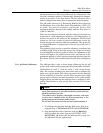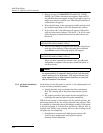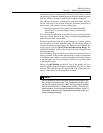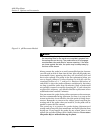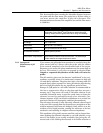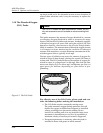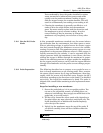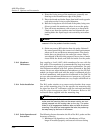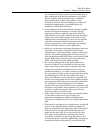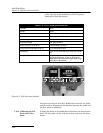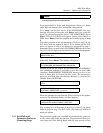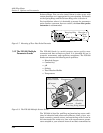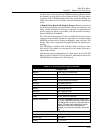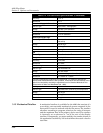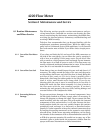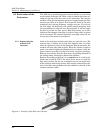
4220 Flow Meter
Section 5 Options and Accessories
5-21
use. Contents of the flow stream are also important, as
some substances will foul the membrane very quickly.
Erratic readings will result from loose, wrinkled or
fouled membranes, or from large bubbles in the
electrolyte reservoir. If erratic readings or evidence of
membrane damage occur, you should replace the
membrane and the KCl electrolyte.
• In environments where the membrane becomes rapidly
coated with oxygen-consuming or oxygen-evolving
organisms, erroneous readings may occur. Chlorine,
sulfur dioxide, nitric oxide, and nitrous oxide can affect
readings by reacting like oxygen at the probe. If your
readings seem unreasonable, you may need to perform
analysis to determine whether these gases are the
cause. Long-term use, as for monitoring, can magnify
the effect of these factors in some applications.
• Avoid any environment containing substances that may
attack any of the probe's materials. Some of these
substances are concentrated acids, caustics, and strong
solvents. The probe materials that come into contact
with the sample include FEP Teflon, acrylic plastic, ABS
plastic, EPR rubber, stainless steel, epoxy, polyether-
imide, and the polyurethane cable covering.
• For correct probe operation, the gold cathode must
always be bright. If it is tarnished (which can result
from contact with certain gases) or plated with silver
(which can result from extended use with a loose or
wrinkled membrane), you need to restore its surface.
You can return it to Isco or clean it yourself with a probe
reconditioning kit. (This kit is available from Isco.)
Never use chemicals or any abrasive not supplied with
this kit. It is also possible for the silver anode to become
contaminated, which will prevent successful calibration.
Try soaking the probe overnight in a 3% ammonia
solution; then rinse with deionized water, recharge with
electrolyte, and install a new membrane. If you are still
unable to recalibrate the probe after several hours,
return the probe to Isco for service.
• If the sensor O-ring is worn or loose, you should replace
it. The probe comes with a kit of O-rings and
replacement membranes. Additional replacement
O-rings are available from Isco in an O-ring replacement
pack.
• If the probe is not going to be in constant use, you should
store it in the plastic bottle provided in shipping. To
keep the electrolyte from drying out, place a small piece
of moist towel or sponge in the bottle and insert the
probe into the open end. If you need service for your
D.O. probe, Isco recommends returning the unit for
evaluation. In addition to servicing the probe, we can
also provide advice on product applications, and you can
also purchase other accessories for use with the D.O.



